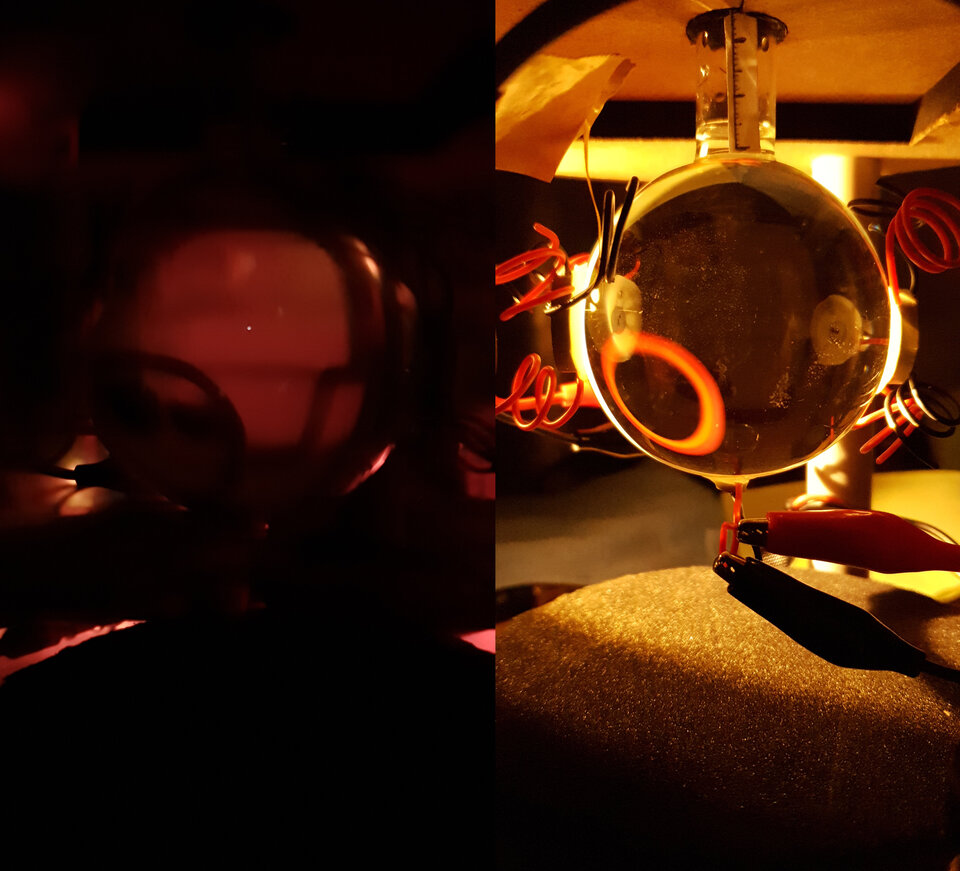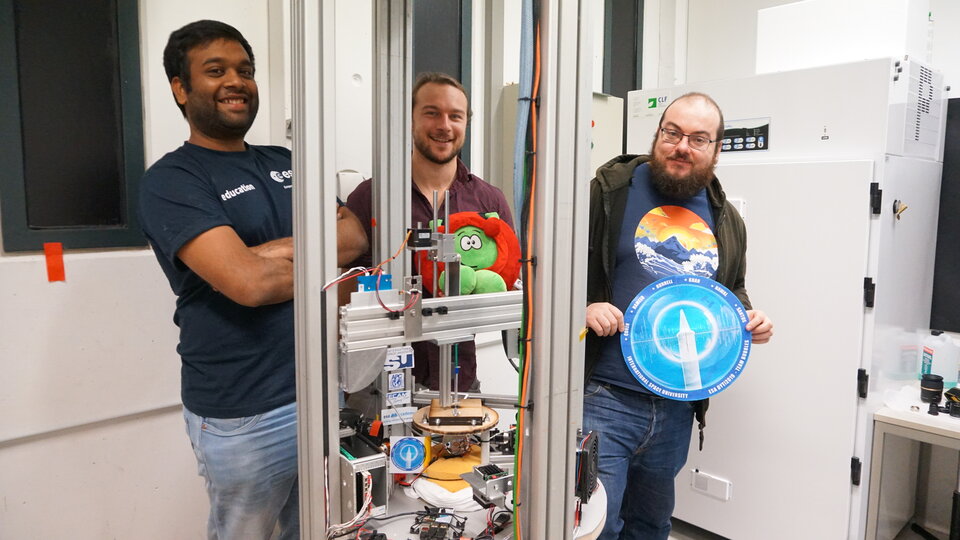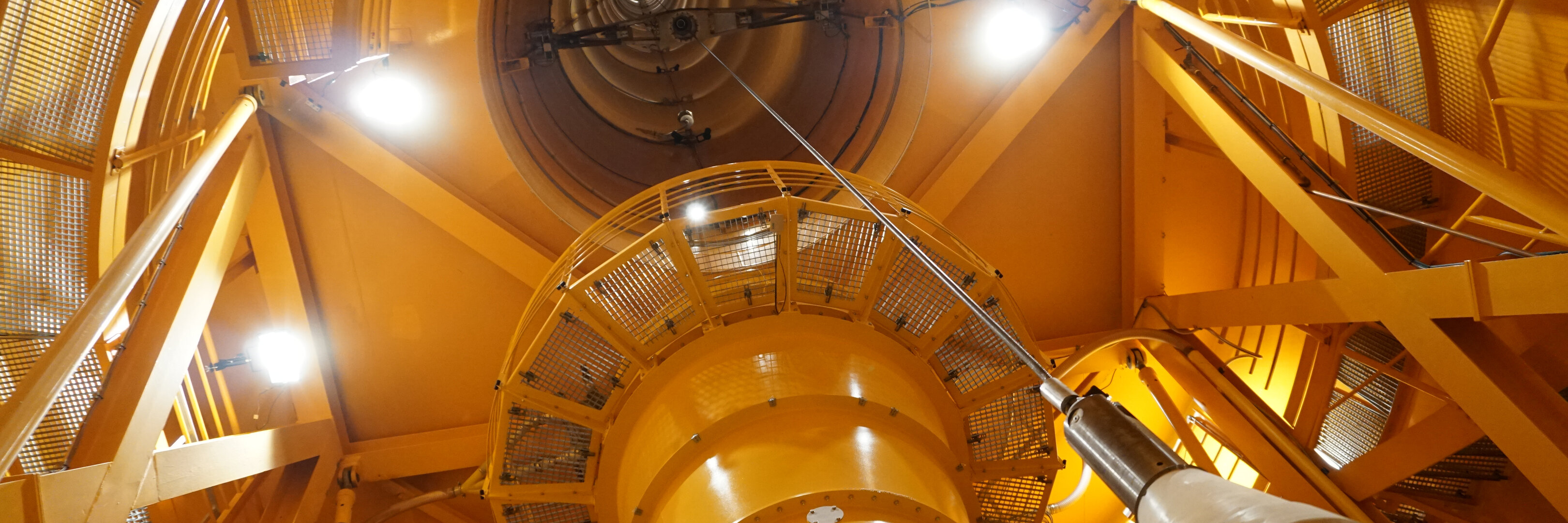Celebrating with a flask of bubbles
Last week, the 2019 Drop Your Thesis! programme concluded for the “Team Bubbles” from the International Space University in France. The experiment was devised to investigate the fundamental physics of single bubble sonoluminescence. This is a phenomenon whereby the short bursts of light are emitted from an imploding bubble in a liquid made to resonate via sound waves at specific frequencies and amplitudes. Even though a great deal of experimental and theoretical work has already been done in this field, the source and mechanisms underlying the light flash still remain elusive.

In the absence of gravity, the bubble stability was expected to improve, allowing higher driving pressures, larger bubble sizes and therefore increased light intensity. Team Bubbles therefore spent the best part of a year designing, building and testing their setup with the close supervision of ZARM, ESA Academy and an appointed mentor from the European Low Gravity Research Association who had experience in this topic. The journey to the Drop Tower was a difficult one however and when the students applied for the Drop Your Thesis! programme, they were likely not expecting just how fraught the journey would be with set-backs and pitfalls.
Single bubble sonoluminescence is, in fact, an extremely tricky phenomenon to master. The number of variables are so vast, all influencing each other in unexpected ways that their setup only generated light only some months before the campaign. Parameters such as temperature, gaseous state of the liquids, precise placement of piezoelectric elements, frequencies, amplitudes all influence the success of the phenomenon. The team even relied on the old art of glass blowing to obtain perfectly resonating spherical flasks, each with their own characteristics which the team spent hours defining.
Finally, their hard work drew to a close as they travelled with their delicate equipment from Strasburg to Bremen. The campaign was split into two weeks, the first focussing on setting up the experiment into the drop capsule with limited dimensions whilst the second was dedicated to performing 5 drops or ‘flights’. When dropped, the experiment experiences high quality weightlessness with perturbing accelerations not exceeding 10-6g, as good, if not better than in the International Space Station. The caveat? The flight time is short. It takes 4 seconds for the capsule, hoisted to 120m height inside a vacuum tube, to descent back down to the ground level deceleration pit, but this was enough for the team to observe their sonoluminescence phenomenon.

The challenge of getting all variables right became evident in practice when during the first three attempts the team could not maintain the bubble trapped in position. The team worked through the possibilities of what may be happening and by the 4 and 5th flights, they managed to observe their sonoluminescent bubbles as it transitioned from 1g to almost 0g! The sense of satisfaction and achievement was palpable as hugs and embraces were thrown around – one year culminating in a few seconds of science. That’s what science in the Drop Tower is all about!
The Team Bubbles leader said “We learned a great deal from this, it was very difficult over the past year, lots of ups and downs but it’s been a fantastic experience!”. Now that the campaign is over, the team are enjoying a short break with a few glasses of celebratory bubbles (champagne this time) before writing the papers and reports.


